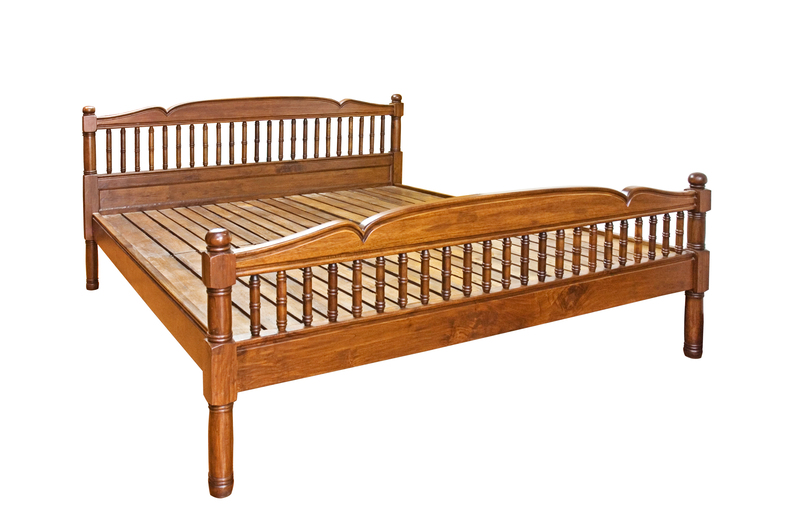Effective Clutter Removal Techniques to Tackle Hoarder Clean Up Challenges
Hoarding can create overwhelming challenges, both emotionally and physically. If you or someone you know is facing the daunting task of cleaning up a hoarder's home, understanding clutter removal techniques is crucial. In this comprehensive guide, we'll explore proven hoarding clean up strategies that will help you reclaim a safe, organized, and comfortable living space.
Understanding Hoarder Clean Up: Why It's Different
Cleaning up after compulsive hoarding behavior isn't the same as regular tidying. The emotional attachment, volume of items, possible health hazards, and risk of relapse all set hoarder clean-up apart.
- Psychological barriers: Many hoarders experience anxiety, fear, and guilt when parting with possessions.
- Physical hazards: Accumulated clutter can conceal mold, pests, and even structural damage.
- Volume of clutter: Years of accumulation require a systematic, not sporadic, approach.
- Complicated logistics: Sorting, recycling, donating, and disposing of a large volume of items demand careful planning.
For these reasons, hoarder clean up techniques must be gentle yet efficient, and above all, compassionate.

Step-by-Step Hoarder Clean Out Methods
1. Preparation and Safety First
Before diving into clutter removal in a hoarded space, proper preparation is essential. Here's how to prepare safely and effectively:
- Wear protective clothing: Gloves, masks, sturdy shoes, and long sleeves minimize exposure to dust, mold, or sharp objects.
- Secure necessary supplies: Garbage bags, boxes, cleaning products, and first aid kit.
- Check utilities: Ensure water, power, and ventilation are available for safety and ease.
- Enlist support: Gather family, friends, or professional organizers; having a team speeds up the process and provides emotional support.
- Assess the environment for hazards, like blocked exits, unstable piles, or exposed wires; address these issues before starting.
2. Developing a Clutter Removal Plan
A structured plan brings order to the chaos and makes the cleaning process manageable.
- Room-by-room approach: Focus on one room at a time to prevent overwhelm and allow for visible progress.
- Set realistic goals: Tackle small sections and celebrate incremental victories.
- Establish ground rules: Work with the hoarder to decide what is kept, donated, recycled, or thrown away.
- Create categories: Use boxes or areas labeled Keep, Donate, Recycle, and Trash.
- Prioritize safety: Always clear walkways and exits first, then address critical living areas like the kitchen and bathroom.
3. Sorting and Decision-Making Techniques
One of the greatest challenges in hoarder clean up is decision-making. Incorporate these expert sorting tactics:
- The "One Touch" Rule: Handle each item only once and make an immediate decision--keep, donate, or discard.
- Sentimental Sorting: Set aside a limited box for sentimental items, and encourage photos of objects if parting feels hard.
- Set limits on storage: Containers for keepsakes or collectibles must have clear boundaries; nothing beyond the box stays.
- Ask critical questions: "Do I use this?" "Does it work?" "Does it bring me joy?"
- Enlist outside perspective: Sometimes, a neutral party can help clarify keep-or-toss decisions.
4. Disposal, Recycling, and Donation
Depending on the volume and types of items, multiple removal methods may be necessary. Consider these options:
- Hire dumpsters: For large-scale cleanouts, renting a dumpster can expedite junk removal.
- Hazardous waste: Paint, electronics, chemicals, and old batteries require special disposal through local authorities.
- Arrange donations: Charities often accept gently-used clothing, furniture, and household goods--some even pick up directly from your home.
- Maximize recycling: Recycle paper, metals, plastics, and electronics responsibly to reduce landfill impact.
- Bulk trash pick-up: Schedule with your waste provider for large-item removals.
5. Professional Hoarder Clean Up Services
In severe cases or when health risks are present, professional hoarding clean up companies provide efficient, discreet, and comprehensive solutions. The benefits include:
- Expertise in hazardous materials: Trained teams handle biohazards, pest infestations, and mold safely.
- Supportive, non-judgmental staff: Compassionate help reduces shame and stress for the person in need.
- Speed and efficiency: Professionals have equipment and experience for fast, thorough results.
- Full restoration: Some services can restore homes to a hygienic, livable condition beyond just clutter removal.
*Tip*: Search for local companies specializing in clutter removal for hoarders and check reviews for reliability and sensitivity.
Addressing the Emotional Side of Hoarder Clean Up
The Importance of Compassion and Patience
It's important to recognize that hoarder clean up challenges are not just physical but deeply emotional. Hoarding is often linked to anxiety, trauma, or depression. Effective techniques are as much about psychology as logistics.
- Build trust: Approach with kindness and respect to foster cooperation.
- Involve the hoarder: Give the person agency in decisions where possible.
- Celebrate progress, no matter how small, to encourage forward momentum.
- Set boundaries: If resistance or arguments arise, take breaks to avoid escalation.
- Don't rush the process: Slow, steady progress is more sustainable than aggressive cleaning.
When to Seek Professional Help (Mental Health Support)
Sometimes, emotional attachment to belongings signals an underlying mental health condition, such as hoarding disorder. If the individual struggles with letting go or if interpersonal tensions run high, seek:
- Counselors or therapists specializing in hoarding disorder
- Support groups (local or online), where others share experiences and resources
- Community engagement programs to encourage ongoing support and accountability
Addressing emotional needs is vital to prevent relapse and support lasting change after the physical clean up.
Organizational Strategies After Hoarder Clean Up
Implementing Clutter Prevention Habits
Once the home is cleaned, maintaining a clutter-free environment is crucial. Preventative strategies can break the cycle of hoarding and keep the space livable:
- Adopt a "one in, one out" rule: For every new item, remove an old one.
- Establish regular donation or recycling days to avoid future accumulation.
- Label storage bins: Clear, labeled containers prevent lost items and promote order.
- Set routines: Allocate a few minutes daily or weekly to straighten up.
- Use calendars or reminders: Timely visual cues can prompt decluttering sessions.
Storage Solutions for Small Spaces
Maximize space and efficiency with smart storage ideas:
- Vertical shelving and wall-mounted racks save floor area.
- Multi-purpose furniture such as ottomans with storage compartments.
- Under-bed or over-door organizers for seldom-used items.
- Stackable bins and drawers reduce visible clutter.
Top Tips for Sustaining a Clutter-Free Home After Hoarding Clean Up
Maintaining a tidy home post-hoarding requires consistent effort and mindset shifts. Here are actionable tips to help:
- Avoid impulse shopping: Make lists and evaluate true necessity before buying.
- Regularly review belongings--periodically reevaluate what you already own.
- Ask for help early: If clutter begins to accumulate, call friends or professionals before feeling overwhelmed.
- Educate yourself on minimalism: Books, blogs, and documentaries can reinforce healthy habits.
- Reward yourself: Celebrate milestones in clutter control to stay motivated.

FAQs About Hoarder Clean Up and Clutter Removal
How long does hoarder clean up take?
The timeline varies depending on the size of the home and volume of clutter. A single room may take a full day or more, while entire homes can require weeks, especially if professional intervention is needed.
What should I do with valuable items found during clean up?
Identify valuables (antiques, jewelry, collectibles) and research their worth. Items of significant value can be sold, appraised, or passed on to family. Proceed with respect and transparency, documenting any items of importance.
Can hoarder clean up services guarantee a relapse won't occur?
While professional clutter removal services restore safety and order, preventing relapse depends on addressing underlying mental health issues and implementing ongoing support systems.
Is it safe to clean a hoarder's home myself?
Safety comes first. If you suspect biohazards, mold, structural damage, or extreme neglect, consult professionals before proceeding. Otherwise, with the proper precautions and support, DIY clean up of moderate clutter is possible.
Conclusion: Making Hoarder Clean Up Effective and Compassionate
Tackling a hoarder clean up is no small feat. By combining compassionate support, step-by-step clutter removal techniques, and organizational strategies, you can help someone regain a clean and healthy home. Always prioritize safety--physical and emotional--while involving professionals for severe situations. Remember, a clutter-free home isn't just about appearance; it's about restoring dignity, safety, and peace of mind.
If you're facing overwhelming hoarder clean out challenges, know that help is available. Whether through careful planning, group support, or expert services, every step forward is significant. Start today to break free from clutter and embrace a new beginning!
